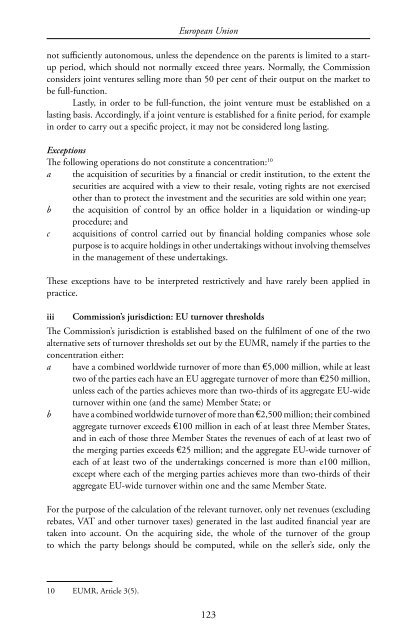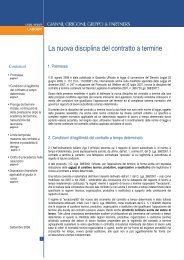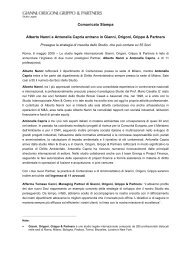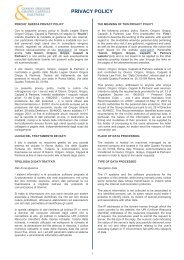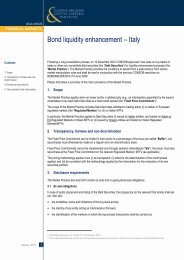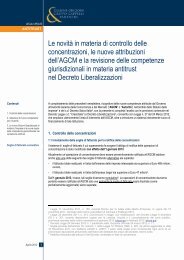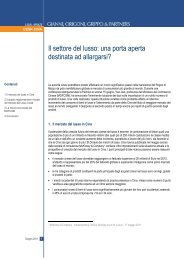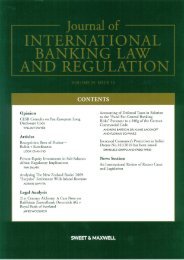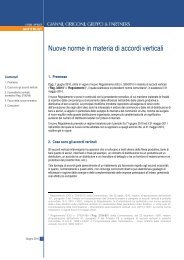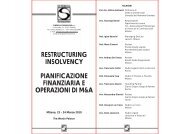The Merger Control Review - Gianni, Origoni, Grippo, Cappelli ...
The Merger Control Review - Gianni, Origoni, Grippo, Cappelli ...
The Merger Control Review - Gianni, Origoni, Grippo, Cappelli ...
You also want an ePaper? Increase the reach of your titles
YUMPU automatically turns print PDFs into web optimized ePapers that Google loves.
European Union<br />
not sufficiently autonomous, unless the dependence on the parents is limited to a startup<br />
period, which should not normally exceed three years. Normally, the Commission<br />
considers joint ventures selling more than 50 per cent of their output on the market to<br />
be full-function.<br />
Lastly, in order to be full-function, the joint venture must be established on a<br />
lasting basis. Accordingly, if a joint venture is established for a finite period, for example<br />
in order to carry out a specific project, it may not be considered long lasting.<br />
Exceptions<br />
<strong>The</strong> following operations do not constitute a concentration: 10<br />
a the acquisition of securities by a financial or credit institution, to the extent the<br />
securities are acquired with a view to their resale, voting rights are not exercised<br />
other than to protect the investment and the securities are sold within one year;<br />
b the acquisition of control by an office holder in a liquidation or winding-up<br />
procedure; and<br />
c acquisitions of control carried out by financial holding companies whose sole<br />
purpose is to acquire holdings in other undertakings without involving themselves<br />
in the management of these undertakings.<br />
<strong>The</strong>se exceptions have to be interpreted restrictively and have rarely been applied in<br />
practice.<br />
iii Commission’s jurisdiction: EU turnover thresholds<br />
<strong>The</strong> Commission’s jurisdiction is established based on the fulfilment of one of the two<br />
alternative sets of turnover thresholds set out by the EUMR, namely if the parties to the<br />
concentration either:<br />
a have a combined worldwide turnover of more than e5,000 million, while at least<br />
two of the parties each have an EU aggregate turnover of more than e250 million,<br />
unless each of the parties achieves more than two-thirds of its aggregate EU-wide<br />
turnover within one (and the same) Member State; or<br />
b have a combined worldwide turnover of more than e2,500 million; their combined<br />
aggregate turnover exceeds e100 million in each of at least three Member States,<br />
and in each of those three Member States the revenues of each of at least two of<br />
the merging parties exceeds e25 million; and the aggregate EU-wide turnover of<br />
each of at least two of the undertakings concerned is more than e100 million,<br />
except where each of the merging parties achieves more than two-thirds of their<br />
aggregate EU-wide turnover within one and the same Member State.<br />
For the purpose of the calculation of the relevant turnover, only net revenues (excluding<br />
rebates, VAT and other turnover taxes) generated in the last audited financial year are<br />
taken into account. On the acquiring side, the whole of the turnover of the group<br />
to which the party belongs should be computed, while on the seller’s side, only the<br />
10 EUMR, Article 3(5).<br />
123


